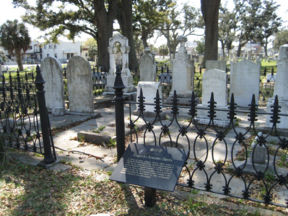Eugenio Antonio Sierra
Eugenio Antonio Sierra was a native of Spain born to Emanuel Sierra and Theresa Parez. Little is known about his origins, but he was said to have enrolled at the University of Cadiz and is credited with writing a book on Medical Techniques and Prescriptions. He purportedly came to Pensacola with Bernardo de Galvez from New Orleans during the American Revolution. Sierra was a captain and surgeon with the Spanish fleet when they captured Pensacola. Sierra in 1785 worked in the Spanish royal hospital as a surgeon. Sierra; however, clashed with his superior, the surgeon-major (Doctor Juan Ruby), and had to leave Pensacola to work at Fort San Marcos in St. Augustine from 1790 – 1794. Sierra later moved back to Pensacola when the position of head practitioner at the hospital became vacant. Dr. Ruby objected to this promotion, but Sierra nevertheless took the position with the salary of $800.00 a year. He was head practitioner between 1794 and 1795. Sierra held a position there until 1 January 1799, when he was sent back to Fort San Marcos purportedly for striking Ruby in a fit of anger after Ruby provided medical care to Sierra’s ill wife. Sierra and his wife (Maria Josefa Calder) separated and she died shortly after the separation. They had one child, Gertrudis Sierra.
| Eugenio Antonio Sierra | |
|---|---|
| Sierra's burial place in St. Michael's Cemetery
| |
| Born | 3 Feb 1750 or 1760 Nation of Valero, Bishopric of La Mancha, Province of Old Castille, (Castilla la Viega)Spain |
| Died | March 12, 1849 Pensacola |
| Occupation | doctor, professor |
| Spouse | Maria Josepha Calder, later Francisca Dauphin |
| Parents | Emanuel Sierra, Theresa Parez |
| Children | Isabella Brosnaham, Eulaliea Sierra, Irine Sierra, Joseph Sierra, Estaban Sierra |
Sierra later met and married Francisca Dauphin around 1797. For a wedding dowry they received the deed for lot 45, which cost around $150.00. They had five children--Eulalie Sierra (1797),Isabella Eugenia (1799 – 1889), Irine Sierra (1802), Joseph Sierra (1804), and Estaban Sierra. Sierra's daughter, Isabella, married Dr. John Brosnaham. Sierra took offense at his daughter Gertrudis, so much so that disowned her. Her step-brother, Joseph, helped to support her.
Dr. Sierra was renowned as a shrewd businessman and a disagreeable man as evidenced by his relationship with Dr. Ryby, his first wife, and his first daughter Gertrudis. He was known to use the law to seize his debtors' property. Dr. Sierra supported his family by purchasing parcels of property at tax sales, buying and treating slaves, and by operating a medical practice.
Dr. Sierra, in 1811, petitioned as “professor of surgery” to have a house and lot on the corner of Zaragossa and Florida Blanca evaluated. This lot was purchased in 1802, but, since it was run down, required renovation before he and his family moved in. Sierra also operated his family practice out of this location. Additionally, he purchased lot 22 for more expansion.In 1811 he was a prominent professor of surgery. He is known to have purchased a guillotine in New Orleans and had it installed in his home practice for amputations. This was the only one erected in the United States. In 1812, he bought the former intendent's house.
Sierra witnessed Andrew Jackson's capture of Pensacola in 1814. At this time one of Sierra's house slaves, Abraham, who spoke at least three languages was either taken by the British who fled Pensacola or simply fled himself. Sierra once more witnessed Pensacola captured by Jackson in 1818. Sierra had cannons buried under one of his houses which have remained there for almost two centuries. Sierra also lived to see the final transfer of Florida to American forces in 1821. One source reports that he was a leader of the Seminoles and was to become known as the “Prophet”. Another claims that he moved to the Apalachicola River with the British, married Hagar, the widow of Billy Bowlegs, and fought in the Seminole Wars until 1837 when he hears a promise of freedom for “native born Floridians”. He is said to have gone to Oklahoma in 1839.
Sierra's final will reads: “I am eighty seven years, less five months and six days”. He signed the will on the 9th day of July 1847. His marker reads: Died in 1849 at the age of 99 years. His final resting place in Saint Michael’s Cemetery, along the south eastern side of the cemetery
